We were exhausted after climbing Erta Ale volcano – not only had the nearly 20 kilometer trek been physically tiring, we had gotten less than four hours of sleep – and so it wasn’t too disappointing that our second day on our tour of the Danakil Depression was mostly driving. The reality of traveling in the Danakil is that there is not too much that can be (enjoyably) done – beyond sitting in the comfort of a well air-conditioned vehicle – during the day. By the time we had eaten breakfast and packed up to leave the Erta Ale base camp, roughly 8:00 a.m., the temperature had already reached 38°C/100.4°F.

For the most part, the driving was slow and bumpy, it took us hours to traverse the path through the volcanic flows back from the Erta Ale base camp to the main road. At times, however, the driving was exciting: after discovering that a landslide had blocked the road to the village where we planned to eat lunch, we took an off-road detour through a river bed.1
Calling our lunch spot “rustic” would be kind. We sat in one large room, from which we could see the meals being prepared in a small shack outdoors. Goats wandered indoors, either seeking shelter from the sun or drawn by the smell of food. The toilet was a hole in the ground surrounded by a half-collapsed shed, and the only way to wash your hands was to dump some water on them and hope for the best. All that said, it was still much more comfortable than the tight, hot, dusty room in which we had eaten lunch the previous day.
This is probably as good of a place as any to comment on the now-apparent fact that the Danakil, although almost unimaginably inhospitable, is by no means unpopulated. Although the scenery we saw along the way was truly remarkable, perhaps the most amazing thing about the region is the largely nomadic pastoralists that inhabit it. Unlike in other hot regions of the more developed world, people living in the Danakil get by without air-conditioning, not to mention a lack of regular access to electricity and running water – or really any modern conveniences.2 Over the course of our four-day trip, we encountered conditions that, while comparatively luxurious in the context of the region, only seemed endurable to us – and sometimes barely so – because of the short length of our stay. Even while we were there, it was hard to fully comprehend that people lived year-round in some of the areas we visited, much less the manner in which they carved out their existences.
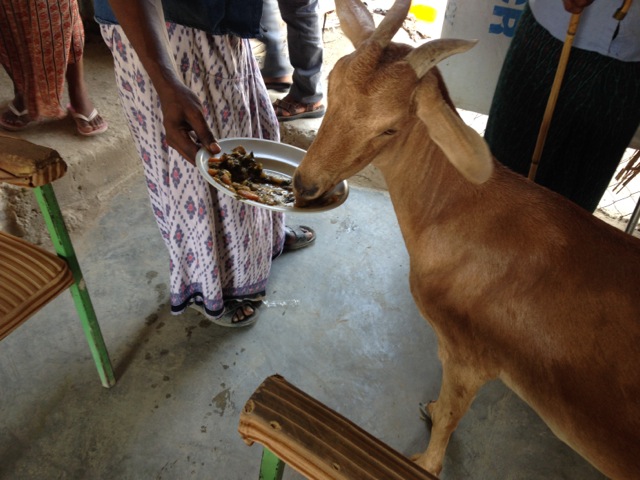
We arrived at our evening’s accommodation by mid-afternoon. After sleeping on the ground beside the rim of a volcano the night before, we didn’t expect much – but we also didn’t expect to be told that we would be sleeping on mats on the floor in the same room as all the other members of our party. Once the mats were on the floor, it was difficult to navigate around the room without stepping on someone or their possessions. There was little to no air movement in the room, and it was a challenging night’s sleep, even though we were very tired. There are no pictures of this accommodation because it was so depressing.
In fairness, though, there were some pleasant surprises about that accommodation. We were able to take showers – albeit bucket showers with cold water – to wash off the grit that had accumulated on us during our volcano adventure. Also, the food was much better than the prior day’s: instead of heaps of tired pasta, we were given Ethiopian fasting food for dinner, and, in the morning, the Israeli girls in our group taught our hosts how to make shakshuka.
The following day, we drove to Berhale, where we had lunch (sadly, we were back to pasta) and spent a couple of hours hanging around, waiting for the temperature to cool down enough for us to continue on to Hamed Ela, our ultimate destination. While we waited, we spent time wandering around, looking at the sundry things on offer in the town’s market. We could have purchased various vegetables, kitchenwares, … or camels.
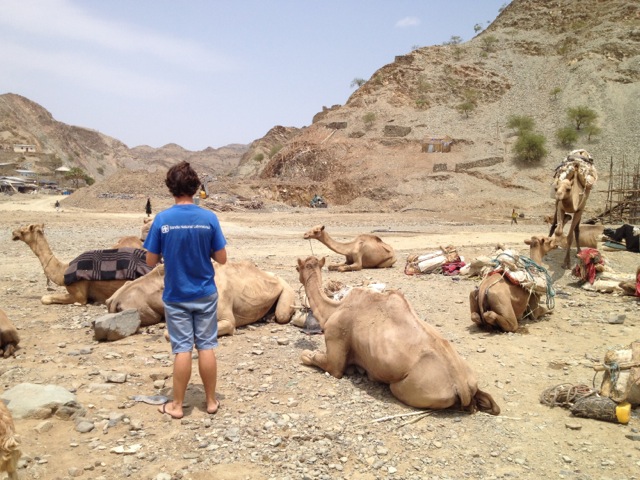
After the hottest part of the day had passed, we pressed on to Hamed Ela. When we arrived, it was still a warm 42°C/107.6°F. I felt like being really dramatic about the heat, but it was actually so hot that it made it hard to breathe, so I just sat there quietly.
Just before sunset, we drove to see the nearby salt flats, which lie at around 120 meters (393 feet) below sea level, making them one of the lowest points on earth. The ground was covered in a very thin layer of extremely salty water (if you happen to go there, I would not recommend tasting it) and we enjoyed walking out on the mirror-like surface.
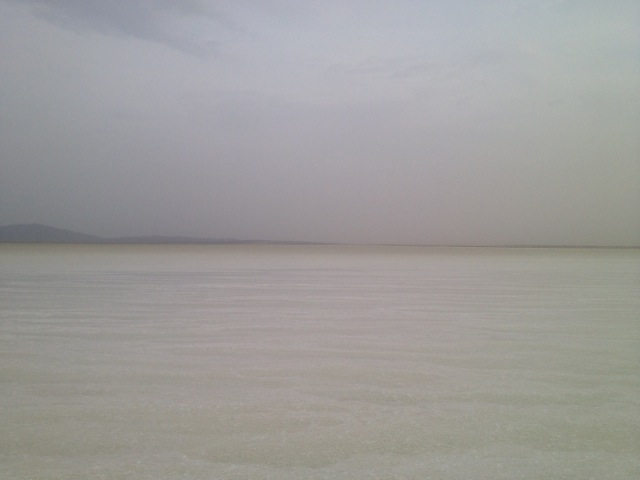
We also enjoyed taking some silly photos.
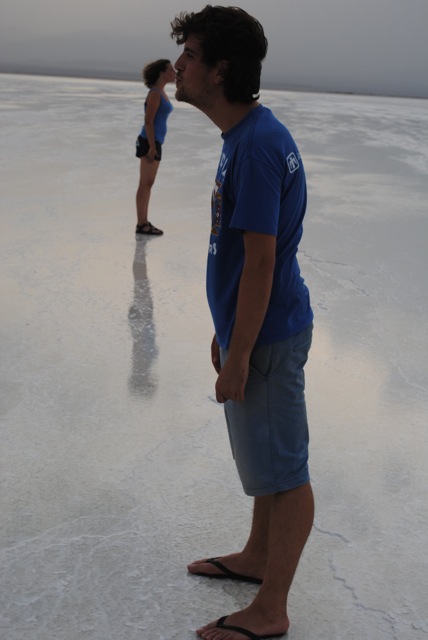 |
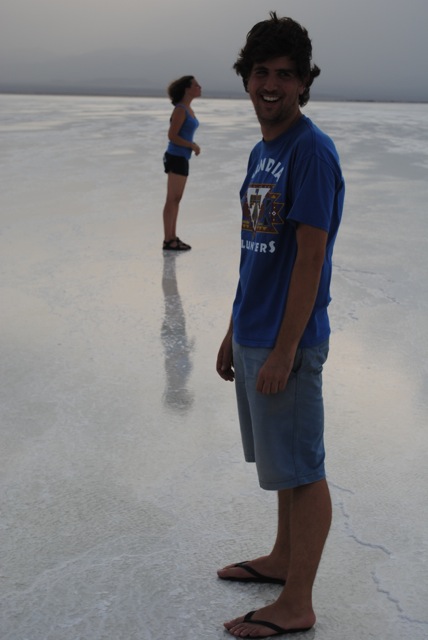 |

As you might imagine, the sunset over the salt flats was amazing.
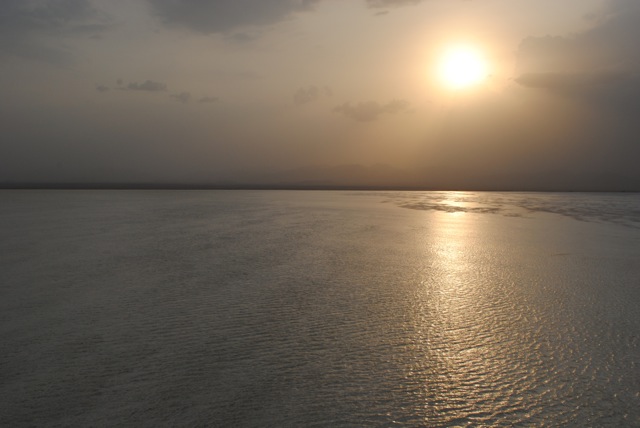
After sunset, we returned to our camp near Hamed Ela and slept under the stars on woven string beds. It had cooled off only slightly, and I was worried that none of us were going to be able to get any sleep, but somehow we managed it. Some of us were woken up in the night when goats infiltrated our makeshift kitchen and began knocking over pots and pans, or when a goat began nudging up to our friend while she was sleeping.
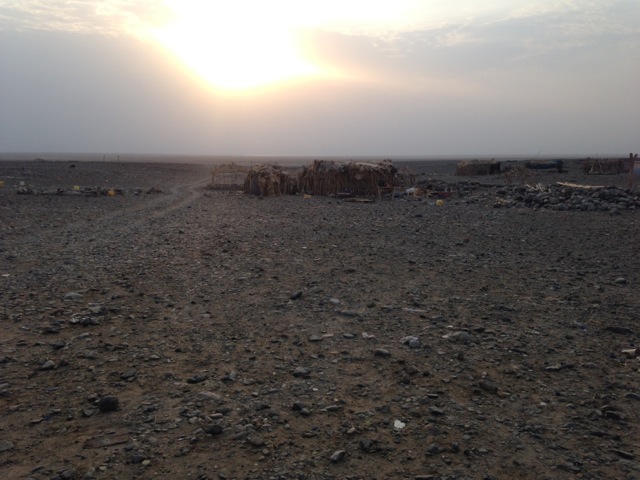


We woke up hot and sticky but surprisingly well-rested and ready for another day in the hottest place on Earth.
1 It felt like we were in a Land Rover commercial.
2 Ethiopia is one of the poorest countries in Africa, and the Afar region, in which the Danakil lies, is one of the poorest in Ethiopia.

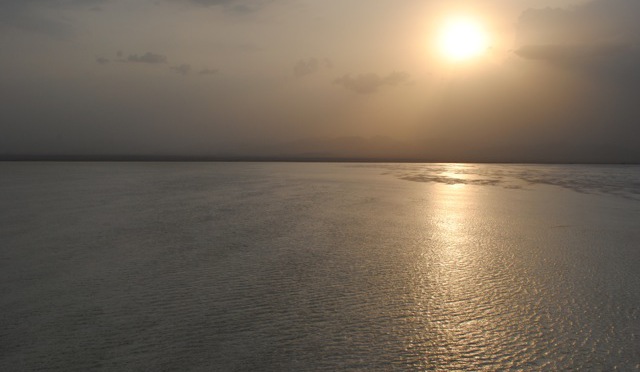

Aaah the memories…….so great to have shared such an extraordinary and challenging trip with you guys. Great times – here’s to so many more! xxxxxx
Agreed!